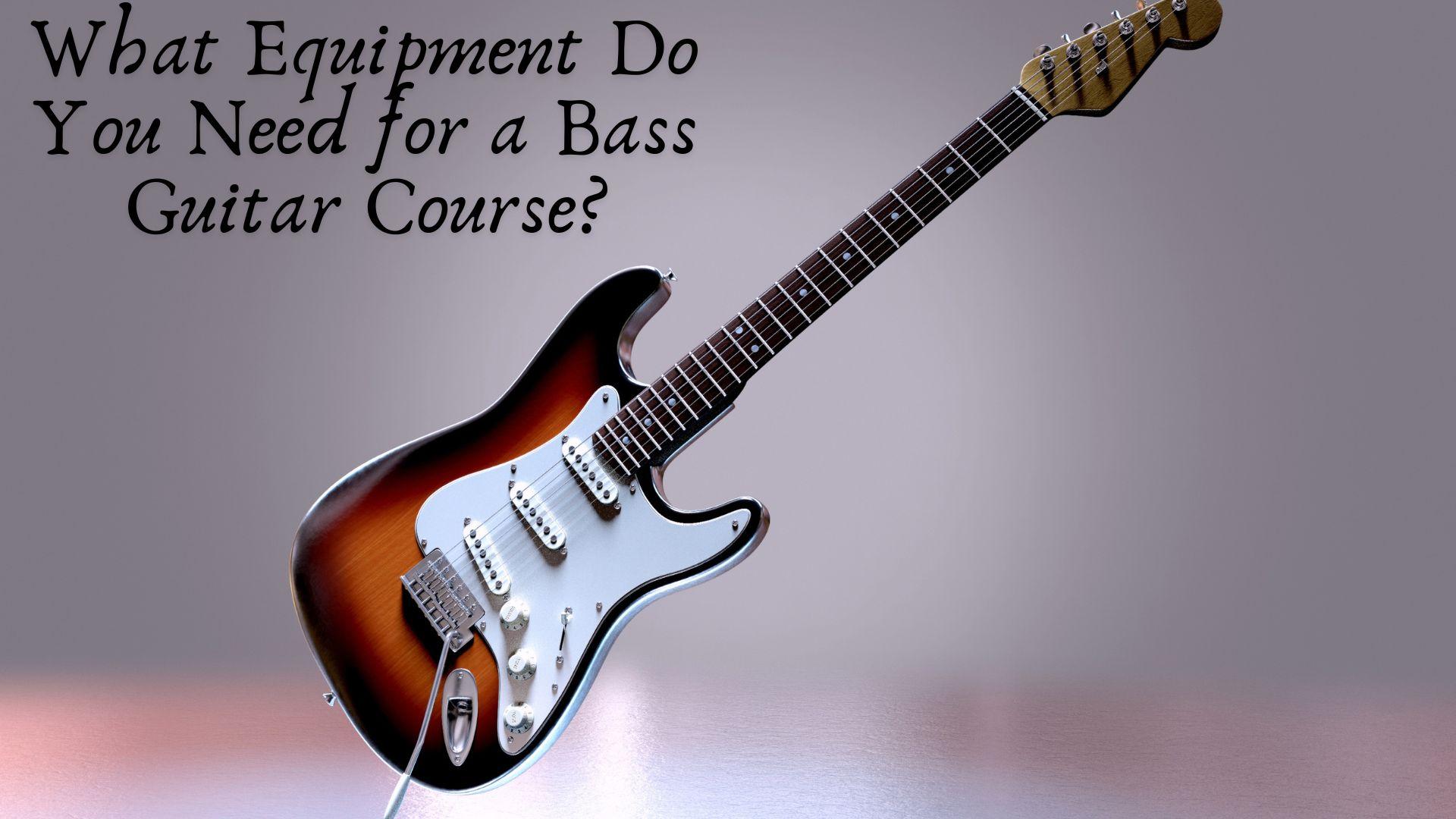If you're considering joining a bass guitar course, congratulations—you’re about to embark on a thrilling musical journey that lays the foundation for groove, rhythm, and musical depth. Whether you're a complete beginner or looking to refine your skills, having the right equipment can make all the difference in your learning experience. This article will guide you through all the essential gear you need for a successful start in any bass guitar course.
The Bass Guitar Itself
At the heart of any bass guitar course is, of course, the bass guitar. Your choice of instrument should reflect your musical goals, comfort, and budget.
Types of Bass Guitars:
-
4-string bass – Most common and beginner-friendly.
-
5-string or 6-string bass – Offers more range but is more complex for beginners.
-
Short-scale bass – Easier for players with smaller hands or younger students.
Key Features to Consider:
-
Body shape and weight – Go for something comfortable to hold and play.
-
Neck profile – Slimmer necks are easier for beginners.
-
Pickups – Active (brighter, requires a battery) or passive (warm and vintage tone).
Tip: If you’re not ready to invest heavily, look for beginner bass kits or second-hand models from trusted sellers.
Amplifier (Bass Amp)
A bass amplifier is essential, even for at-home practice, as it helps you hear the low frequencies clearly and understand how your playing really sounds.
Choosing a Bass Amp:
-
Practice amps (10-30 watts) – Portable, affordable, and perfect for home use.
-
Combo amps – Include the amp and speaker in one unit; ideal for beginners.
-
Modeling amps – Offer effects and amp simulations, great for versatile tone exploration.
Popular Brands: Fender Rumble, Ampeg, Orange, and Hartke.
Instrument Cable
You'll need a good-quality instrument cable to connect your bass guitar to the amp.
Things to Look For:
-
Length – 10 to 15 feet is generally ideal.
-
Durability – Braided or shielded cables are more reliable.
-
Noise reduction – Look for cables with low capacitance to minimize unwanted noise.
Investing in a decent cable prevents crackling sounds and signal loss during practice.
Tuner
A tuner is crucial for maintaining pitch accuracy. Being in tune is foundational for any musician, especially in a course setting.
Types of Tuners:
-
Clip-on tuner – Clips to your bass’s headstock and reads vibrations.
-
Pedal tuner – For those using pedalboards.
-
App-based tuner – Convenient and often free, but less reliable in noisy environments.
Staying in tune not only makes your practice more pleasant but also builds your ear training.
Strap
A comfortable guitar strap helps with posture and stamina, especially during long practice sessions or performances.
Key Considerations:
-
Adjustability – Make sure it fits your body size and playing style.
-
Material – Leather and neoprene straps offer comfort and durability.
-
Strap locks – Optional but helpful for preventing your bass from slipping.
Standing practice is often encouraged in courses, so a strap is essential even if you mainly play sitting down.
Gig Bag or Hard Case
Protecting your investment is crucial. A gig bag or hard case allows you to transport your bass safely to and from classes.
Options:
-
Gig Bag – Lightweight, padded, with storage compartments.
-
Hard Case – Rigid protection, ideal if you’ll be traveling often or flying.
Choose based on your commuting habits and how much protection you need.
Headphones
Many modern amps have headphone outputs for silent practice, a lifesaver if you live in an apartment or practice at odd hours.
Recommendations:
-
Closed-back headphones – Block external noise and keep your playing private.
-
Studio headphones – Provide accurate sound representation.
Make sure your headphones are compatible with your amp or any audio interfaces you plan to use.
Metronome
Developing timing is fundamental in any bass course. A metronome trains you to lock into rhythm, especially vital for bass players who drive the beat.
Options:
-
Physical metronome – Reliable and simple.
-
Apps or digital devices – Many are customizable and easy to use.
Practicing with a metronome ensures you stay in the pocket—a key role for any bassist.
Picks and Finger Protectors (Optional)
While most bass players use their fingers, some styles benefit from using a pick. Finger protectors or tape can help beginners avoid blisters during long sessions.
Popular Accessories:
-
Picks (1mm or thicker) – Provide a sharper attack for rock or punk styles.
-
Finger protectors – Silicone or rubber sleeves for added comfort.
These are optional but helpful tools depending on your playing style.
Maintenance Tools and Accessories
Basic maintenance ensures your bass remains in top condition.
Essentials:
-
String winder and cutter – For changing strings quickly.
-
Cleaning cloth – Wipe down after every session to maintain finish.
-
Bass strings – Have an extra set on hand; strings wear out over time.
-
Allen keys and screwdrivers – For adjusting the truss rod or bridge if needed.
A small toolkit can save you time and money in the long run.
Notebook or Digital Device for Notes
Whether you’re attending in-person or online lessons, keeping notes is key for reviewing what you’ve learned. Use a notebook, tablet, or laptop to jot down scales, chord progressions, and practice goals.
Conclusion
Having the right gear is about more than just looking the part—it’s about creating a solid, reliable, and comfortable practice environment that supports your learning. With the essentials listed above, you'll be fully equipped to get the most out of your bass guitar course and focus on what really matters: making great music.



